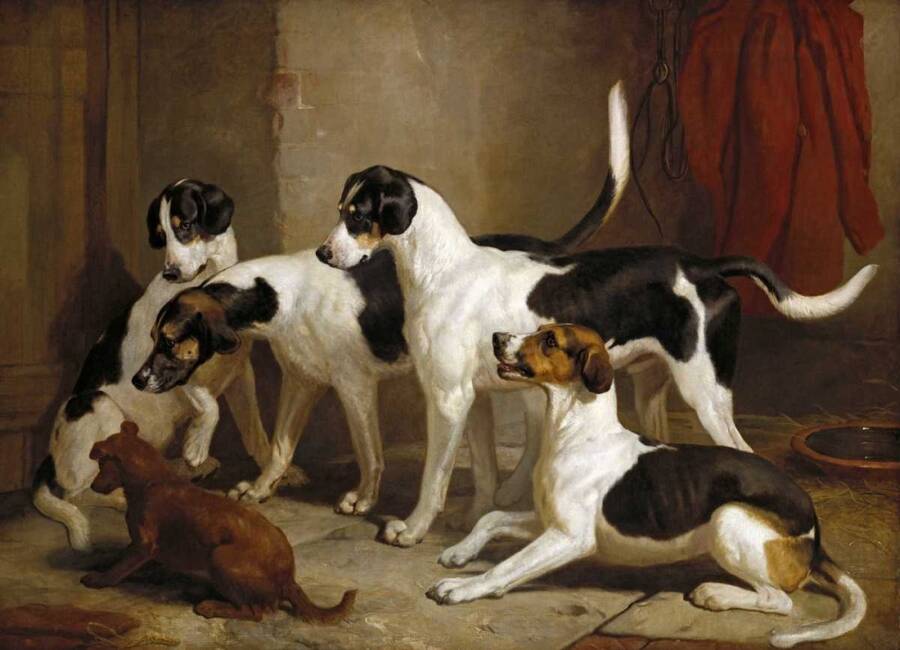Concilio Et Labore [Latin] - By Wisdom And Effort
The wise see knowledge and action as one; they see truly. - Bhagavad Gita 5:4
Origins and History
Hinduism, one of the world’s oldest religions, has no single founder or fixed point of origin, evolving over millennia in the Indian subcontinent. Its roots trace back to the Indus Valley Civilization (c. 2500–1500 BCE), with early practices evident in archaeological findings like seals depicting yogic postures. The Vedic period (c. 1500–500 BCE) introduced the Vedas, sacred texts that form the foundation of Hindu thought, composed in Sanskrit by Indo-Aryan communities. Over time, Hinduism absorbed diverse regional traditions, giving rise to a complex tapestry of beliefs and practices. Today, Hinduism is the third-largest religion globally, with approximately 1.2 billion adherents, primarily in India, Nepal, and the global Indian diaspora.
Core Beliefs
Hinduism is a diverse tradition, often described as a way of life rather than a strictly organized religion. Its core concepts include:
- Dharma: The moral and ethical order governing individual and societal conduct, varying by caste, stage of life, and context.
- Karma: The law of cause and effect, where actions influence future outcomes, including rebirth.
- Samsara: The cycle of birth, death, and rebirth, from which liberation (moksha) is sought.
- Moksha: Liberation from samsara, achieved through spiritual knowledge, devotion, or righteous action.
- Brahman: The ultimate reality or cosmic spirit, manifested in countless deities and forms.
Hindus worship a vast pantheon, with major deities like Vishnu (the preserver), Shiva (the destroyer and transformer), and Devi (the goddess) revered in various forms. Monotheistic, polytheistic, and pantheistic interpretations coexist, reflecting Hinduism’s inclusivity.
Practices
Hindu practice is highly diverse, shaped by region, caste, and sect. Key practices include:
- Puja: Ritual worship, often involving offerings to deities at home or in temples.
- Yoga: Spiritual disciplines (e.g., Bhakti, Jnana, Karma, and Raja Yoga) aimed at self-realization or union with the divine.
- Festivals: Major celebrations like Diwali (festival of lights), Holi (festival of colors), and Navratri (honoring the goddess) mark spiritual and seasonal cycles.
- Pilgrimage: Visiting sacred sites like Varanasi, Tirupati, or the Ganges River for purification and merit.
- Samskaras: Life-cycle rituals, such as birth, marriage, and death ceremonies, marking key transitions.
Daily life often integrates rituals, meditation, and ethical living, with vegetarianism common among some communities due to the principle of ahimsa (non-violence).
Sacred Texts
Hinduism’s vast textual tradition spans millennia. The Vedas (Rig, Sama, Yajur, and Atharva) are the earliest, containing hymns, rituals, and philosophical insights. The Upanishads (c. 800–300 BCE) explore metaphysical questions about Brahman and the self (Atman). Epics like the Mahabharata (including the Bhagavad Gita) and Ramayana offer moral and spiritual guidance through narrative. The Puranas (c. 300–1500 CE) detail cosmology, mythology, and deity worship, shaping popular devotion. Later texts, like the Agamas and Tantras, guide temple worship and esoteric practices. While Sanskrit texts hold authority, translations and vernacular works have made teachings accessible across India’s linguistic diversity.
Denominations and Diversity
Hinduism lacks a centralized authority, resulting in diverse sects:
- Vaishnavism: Focuses on Vishnu and his avatars (e.g., Rama, Krishna), emphasizing devotion (bhakti).
- Shaivism: Centers on Shiva, blending asceticism, yoga, and mysticism.
- Shaktism: Worships the divine feminine (Devi) as the supreme power.
- Smartism: Advocates a non-sectarian approach, venerating multiple deities.
Smaller movements, like the Arya Samaj (emphasizing Vedic purity) and Neo-Hindu groups (e.g., ISKCON), reflect modern reformulations. Practices vary widely, from ascetic monasticism to vibrant temple worship, shaped by India’s regional and cultural diversity.
Worship and Community
Hindu worship occurs in temples, homes, and natural sites like rivers or mountains. Temples, such as those dedicated to Venkateswara or Jagannath, are architectural marvels, often housing consecrated deity images. Community life revolves around festivals, caste-based duties, and family rituals, with priests (Brahmins) often officiating. The concept of sangha (community) is less formal than in other religions but vital in village and caste networks. Modern Hindu communities, especially in the diaspora, maintain traditions through cultural organizations and temples while adapting to local contexts, such as simplified rituals in urban settings.
Art and Cultural Practices
Hindu art and architecture are iconic, from ancient rock-cut temples (e.g., Ellora) to intricate South Indian gopurams. Deity images, sculpted or painted, are central to worship, designed to evoke divine presence. Hindu art often incorporates symbolism, such as Shiva’s lingam or Vishnu’s conch. Classical dance (e.g., Bharatanatyam), music, and literature draw heavily from Hindu themes, with epics like the Ramayana inspiring performances worldwide. While idolatry concerns are minimal, some reform movements (e.g., Arya Samaj) reject image worship, favoring formless divinity. Modern Hindu art includes digital media and globalized expressions, like Bollywood’s mythological films.
Early vs. Later Teachings
Early Hinduism, rooted in Vedic rituals, emphasized fire sacrifices (yajnas) and caste-based duties, with philosophical inquiries emerging in the Upanishads. Later developments, particularly during the Bhakti movement (c. 7th–17th centuries), shifted toward personal devotion to deities like Krishna or Rama, making spirituality more accessible across castes. Tantric traditions introduced esoteric practices, while medieval and modern reforms (e.g., by figures like Swami Vivekananda) emphasized universalism and social reform. These shifts reflect Hinduism’s adaptability, balancing ancient ritualism with devotional and philosophical innovations.
Persecution and Challenges
Historically, Hindus faced invasions and cultural disruptions, particularly during medieval Muslim and colonial British rule, which sometimes led to temple destruction or forced conversions. Today, Hindus in minority regions (e.g., Pakistan, Bangladesh) face discrimination, including temple vandalism or social marginalization. Within India, tensions with minority religions, particularly Muslims and Christians, have sparked controversies, with some Hindu nationalist groups advocating for a Hindu-centric state, raising concerns about secularism. Conversely, Hindus in the diaspora often navigate cultural assimilation while maintaining identity, facing occasional prejudice in Western countries.
Controversies and Modern Debates
Hinduism faces debates over caste, gender, and secularism. The caste system, rooted in Vedic social structures, has been criticized for perpetuating inequality, though reforms and affirmative action have challenged its rigidity. Gender roles, particularly in traditional practices like sati (now banned) or restricted temple access, spark ongoing discussions, with many Hindus advocating egalitarian interpretations. Political movements invoking Hindu identity, such as Hindutva, raise questions about pluralism in India’s diverse society. Globally, Hinduism’s portrayal in Western media, often as exotic or superstitious, prompts efforts to clarify its philosophical depth.
Contemporary Context
Hinduism continues to shape India’s culture, politics, and global diaspora. Modern practices include online puja, yoga’s global popularity, and digital access to scriptures. Hindu environmental movements draw on reverence for nature, while interfaith dialogues promote understanding. Challenges like urbanization and globalization prompt adaptations, such as streamlined rituals or virtual communities. Hinduism’s emphasis on pluralism and inner spirituality remains a guiding force for its followers, navigating tradition and modernity in a rapidly changing world.









